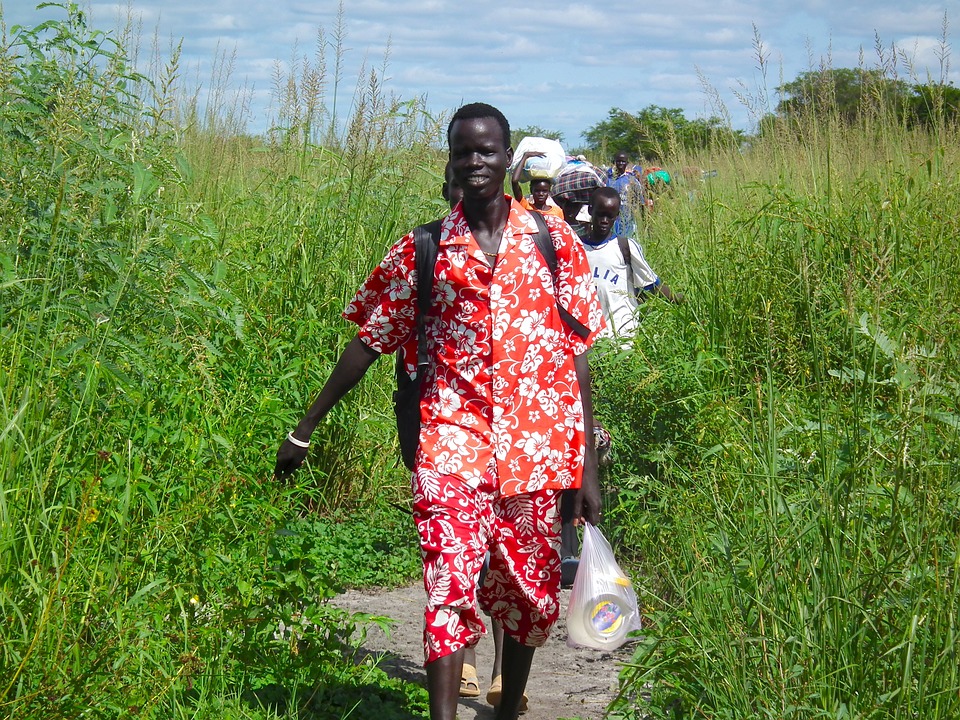Canadian Immigration Continues to Strengthen the Economy
Recent Changes to The Canadian Immigration System Will Help Strengthen Canada’s Workforce, Economy, And Society
Canada recognizes the importance immigration plays in strengthening our country, both socially and economically. As part of Canada’s 2017 Immigration Plan, more newcomers are coming to Canada this year to fulfill demographic and labour market demands. There are also plans to further increase immigration targets in the future. To continue thriving economically and socially and to meet the growing demands of an aging population, Canada will need to promote economic immigration for years to come. Canadian immigration lawyers are already hard at work helping immigrants apply and settle.
As reported by CIC News, Canadian Immigration Minister Ahmed Hussen reaffirmed Canada’s commitment to economic immigration and has plans for welcoming more newcomers. In the first half of 2017, Canada’s targeted economic immigration admissions rose by 7.41% from 2016.
New programs targeting skilled immigrants, such as the Global Talent Stream (GTS), seek to fast-track the immigration process for in-demand skilled temporary foreign workers. These will attract more workers who can contribute to Canada’s economy and fulfill labour market demands.
Increase in Invitations to Apply
The number of Invitations to Apply (ITAs) issued in 2017 already exceeds the total number issued for all of 2016. Last year, 16,033 ITAs were sent out during the first 15 draws; in comparison, 47,876 ITAs have been issued for the first 15 draws of this year.
The minimum score required to obtain an Express Entry ITA using the Comprehensive Ranking System (CRS) was at a record low for seven of the 15 draws this year. Additionally, a more recent change to the CRS awarded additional points to applicants with French language skills and applicants with siblings in Canada.
Atlantic Immigration Pilot Program
The launch of a federal-provincial immigration pilot seeks to improve the economic immigration system, bringing skilled newcomers to Atlantic Canada. This program is also intended to strengthen the workforce for these provinces. The Atlantic Immigration Pilot Program (AIPP) aims to welcome up to 2,000 principal immigrants. They, along with their their families, will settle in Atlantic provinces. Principal immigrants will have job offers from employers and a settlement plan specific to their family.
Canadian immigration officials can learn from this pilot program and apply this knowledge to further improve the economic immigration system. This is especially true for those provinces facing economic challenges as a result of labour shortages and low working-age populations.
Changes to the Canadian Citizenship Act
Hussen also stated that permanent immigration, ending with Canadian citizenship, is an important part of strengthening Canada’s economy and society. And recent changes to residency requirements will make it easier, decreasing the waiting time to apply for citizenship.
These changes provide a greater incentive for those looking to immigrate to Canada, and will give immigrants a better chance at becoming a Canadian citizen after settling, working, and establishing a new life here.
With the continued promotion of immigration, especially for fulfilling labour market demands, Canada has a bright future.
Corporate Immigration Speeds Up with New Initiative
Recently-Launched Pilot Program To Streamline Highly Skilled Foreign Workers Permit Application Process
To strengthen the Canadian workforce and economy, the Canadian government is turning to highly skilled foreign workers to fill positions currently facing a labour shortage. By filling these positions in an efficient and timely manner, Canadian businesses can thrive and grow with the help of qualified workers. In turn, these workers pass on their skills to Canadian workers and further benefit the workforce. For businesses interested in hiring skilled foreign workers, contact a corporate immigration law firm.
As reported by CIC News, the Canadian government launched the Global Talent Stream (GTS) pilot program on June 12, 2017. The GTS seeks to fast-track the work permit application process for highly skilled workers, and is part of the Temporary Foreign Worker Program (TFWP).
The GTS set application processing time to two weeks so businesses can fill positions quickly with skilled foreign workers, assuming they cannot otherwise find skilled talent in Canada. Two new work permit exemptions are also in effect.
The Global Talent Stream
The GTS is part of Canada’s Global Skills Strategy to prioritize and streamline work permit applications for high-demand jobs that require skilled workers. This pilot program, run by Employment and Social Development Canada, will initially run for 24 months. As a result, a corporate immigration law firm has become a must-have resource for applicants and businesses alike.
Under the GTS, businesses can be categorized into one of two categories:
- Category A—Businesses deemed high-growth and in need of foreign talent to generate growth; and,
- Category B—Business that need highly skilled foreign talent to fulfill occupations on the Skills Shortage List.
Requirements
For businesses to qualify for Category A, they must be recommended by GTS referral partners and recognized as high-growth, prove that they are hiring specialized talent, and the position must be highly paid (i.e., a minimum annual salary of $80,000 CAD).
For businesses to qualify in Category B, they must first prove their need for foreign talent to fill highly skilled occupations on the Global Talent occupations list and be willing to pay the prevailing wage or higher.
Businesses and employers must apply for a Labour Market Impact Assessment (LMIA). Once the LMIA has been obtained, a foreign worker can apply for a work permit through the GTS. The LMIA is documentation that the employer could not fill a job position with a Canadian citizen or permanent resident.
High-Demand Occupations
The Global Talent occupations list recognizes several jobs as part of a skills shortage in Canada; therefore, these positions have focused heavily on the Canadian tech sector. They include:
- Computer engineers (except software engineers and designers);
- Information systems analysts and consultants;
- Database analysts and data administrators;
- Software engineers and designers;
- Computer programmers and interactive media developers;
- Web designers and developers;
- Electrical and electronics engineering technologists and technicians;
- Information systems testing technicians; and,
- Digital Media and Design (positions requiring a minimum of five years’ industry experience only, specific skills requirements apply).
Category B businesses in these fields may access the GTS to fast-track worker applications.
The Global Talent Stream represents a part of Canada’s continued focus on encouraging immigration. As a result, while the focus remains on tech, as Canada faces economic challenges, this focus may shift to meet demand. In later comments, Immigration Minister Ahmed Hussen expressed that he hoped the final step for many of these temporary foreign workers and permanent residents would be full Canadian Citizenship.
For now, economic and corporate immigration remain key drivers of Canadian immigration efforts. For more information about hiring skilled foreign workers and the work permit application process, contact a corporate immigration law firm.
A Canadian is a Canadian is a Canadian
In May, both the Senate and the Federal Court of Canada found that citizenship revocation without an opportunity to respond was wrong
The FCC’s decision in Hassouna et al v Minister of Citizenship and Immigration Canada established that in the context of citizenship revocation, an affected individual must be given an opportunity to have special circumstances considered before a final decision is made. Furthermore, procedural fairness may demand the right to an oral hearing if credibility is an issue.
Similarly, the Senate strongly recommended that the Minister of Citizenship and Immigration be required to inform those whose citizenship was revoked that they have the right to appeal this decision in the Federal Court. The intent was to create an additional safeguard to the 30-day response time to the Minister individuals already enjoyed.
On June 15, the Liberal Government agreed
Bill C-6, which repealed the Conservative’s changes to the Citizenship Act made in 2014, also introduced procedural safeguards for those facing citizenship revocation missing from previous Citizenship Acts.
Originally denied the ability to formally appeal this decision because it ‘encouraged people to lie due to the lengthy appeal times’ (at least according to one Conservative MP), the new law now statutorily protects individuals’ rights to appeal such decisions to the Federal Court if they are unreasonable. This change provides additional protection to individuals whose citizenship has been revoked for “frauds” such as (but not limited to) forgetting to list minor convictions (which would otherwise not make an individual inadmissible anyways) or to update application if a child is born into the immediate family. It represents another step to ensuring that Canadian citizenship is accessible and enduring.
Bill C-6 received Royal Assent on June 19. Other changes introduced include:
- Revocation:
- Dual citizens can no longer be stripped of Canadian citizenship if convicted of terrorism, treason, or espionage
- Changes In Eligibility:
- Individuals between 18-54 years of age must pass language and knowledge tests (previously this was required by anyone 14-64 years of age)
- Up to 265 days of temporary status (such as work or study) are now counted towards the residency requirement
- New Canadians no longer required to say they intend to reside in Canada as part of the application
- Permits minors to apply for Citizenship without their parent’s consent or support
Have you had your citizenship revoked or refused? Do you have questions about how to obtain citizenship? Contact us today to schedule a consultation with one of our immigration and refugee lawyers.
Review of Canadian Asylum System Underway
Canadian Government Aims to Establish a More Efficient System for Processing Refugee Claims
On June 9, 2017, Immigration Minister Ahmed Hussen ordered a comprehensive review of the asylum process in Canada. The Minister stated the review aims to improve efficiency and speed up the processing times for asylum claims, which have been steadily increasing since 2015.
According to the government’s announcement, a third-party expert will spearhead the review. An independent secretariat will provide assistance in examining how the Immigration and Refugee Board (IRB) processes claims for protection. This independent review will provide recommendations for speeding up the system and ensuring that the claims are handled efficiently.
Although the IRB has recently implemented reforms to asylum claims processes, these alone are not enough to address the rising influx of individuals seeking refugee protection. A shortage of decision-makers and judges, coupled with an extensive backlog, has led to longer processing times and extensive delays. A recent analysis indicated that wait times for asylum claims are likely to increase even further. It's possible claimants will face up to 11-year-long wait times before the Board hears their case. The government's review seeks to address these issues and determine ways to improve asylum claims. The first findings and recommendations from the review will be presented by way of an Interim Report in December 2017.
The proposed review is certainly a step in the right direction as it illustrates the government’s acknowledgement of the significant problems currently impeding the asylum process. Indeed, a more efficient and productive way of offering protection to persons fleeing persecution has been long overdue in Canada. Under the current system, many refugee claimants spend indefinite amount of time waiting for the IRB to decide their case. Even worse, some have spent years just waiting for the Board to schedule a hearing.
A review of the system alone, however, is not sufficient to address these problems. Insufficient resources, funding, and a lack of staff capable of handling the increased workload are leading obstacles to a productive asylum system. As such, the government must first and foremost address this obstacle if it hopes to resolve the issues currently plaguing Canada’s refugee system. The problems before the IRB require immediate action and attention, not several months of wait time for recommendations.
New Guidelines for LGBTIQ+ Refugee Claims
IRB Introduces New Guidelines to Provide Dignity and Compassion to LGBTIQ+ Claims
On May 1, 2017, the Immigration and Refugee Board (IRB) introduced new guidelines for adjudicating refugee claims that are based on sexual orientation and/or gender identity and expression (SOGIE). These claimants are to be afforded further safeguards similarly to cases of political or religious persecution, where decision-makers are required to not put the political or religious views of a refugee claimant on trial.
For lesbian, gay, bisexual, trans, intersex and queer (LGBTIQ+) refugee claimants, these new guidelines are meant to prevent inappropriate and irrelevant lines of questioning by decision-makers about their sexuality. They also address concerns raised by many Canadian refugee lawyers.
Unique Challenges
The guidelines acknowledge that “individuals with diverse SOGIE may face additional risks because of their gender, including domestic violence, forced marriage, sexual trafficking, honour crimes, as well as discrimination with respect to housing, employment, education, health and social services.” The guidelines thus outline the challenges faced in these cases; the appropriate language that should be used by decision-makers; the protection of sensitive information; the importance of avoiding stereotypes in speaking to claimants and in rendering decisions; and guiding principles for assessing credibility.
There were issues in the past where decision-makers required claimants to prove their sexual orientation or gender identity. For example, decision-makers had asked claimants how or how frequently they performed certain sexual acts. The guidelines address the use of such questions, as they are both irrelevant to the persecution faced by the individual and inappropriate. Now, LGBTIQ+ refugee claimants will no longer have their sexuality put on trial.
Dismantling Stereotypes
In this context, decision-makers are not allowed to rely on stereotypes relating to SOGIE in questioning a claimant and in rendering their decision. The guidelines outline several inappropriate stereotypes, including the following assertions about individuals with diverse SOGIE:
- That they have feminized or masculinized appearances or mannerisms;
- That they do not participate in cultural or religious customs or traditions;
- That they are promiscuous or sexually active and do not engage in exclusive relationships;
- That they have had same-sex sexual experiences or relations; and
- That they would not have had sexual experiences or relations.
A claimant cannot be required to fit into these stereotypes, and as such, stereotypes cannot be used to draw a negative finding of credibility against a claimant.
Principles for Testimony Assessment
The guidelines provide further principles for assessing the claimant’s testimony. First, it must be recognized that corroborating evidence is not always available in cases of persecution on the basis of SOGIE. For example, a claimant may have hidden their SOGIE due to stigma or fear of harm; it is possible that the claimant has not participated in LGBTIQ+ culture, organizations or events; and, claimants cannot be asked to provide evidence in the form of sexually explicit visual material.
Second, questioning should be done in a sensitive, non-confrontational manner; in this vein, the guidelines explain that self-awareness of one’s sexual orientation and gender identity can change over time, which may be gradual or non-linear.
Third, although a decision-maker may draw a negative inference based on the inconsistency, implausibility or vagueness of the claimant’s testimony, such findings cannot be based on stereotypes, and decision-makers must consider any cultural, psychological or other barriers that can reasonably explain any gaps in the testimony.
Overall, the guidelines do address many concerns Canadian immigration lawyers had with respect to the vulnerability of LGBTIQ+ refugee claimants and provide a better protection of their dignity through a compassionate framework while helping ensure they are not unfairly denied protection in Canada.





